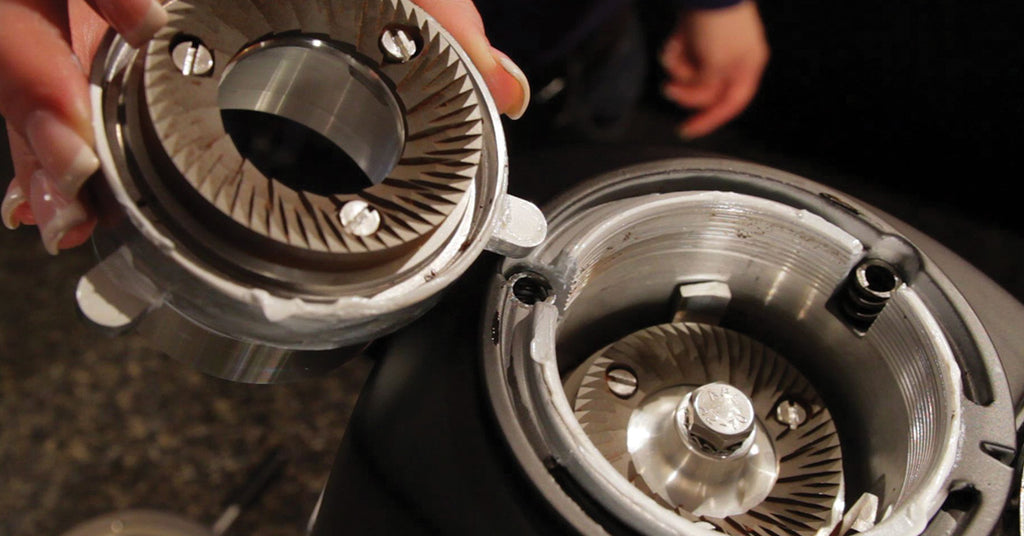What's in a Burr?

You’ve heard it before: Burr grinders are better than their blade counterparts for coffee, especially espresso, preparation. They minimize heat transfer, preserve flavor and aroma, and afford you the ability to fine-tune your grind. You’re sold on a burr grinder; good espresso will pay for itself in no time. But as you start to shop, you notice there are more than a few things to consider when purchasing a burr grinder.
If you’re feeling a bit overwhelmed by your choices, consider this article your cheat sheet. We’ll delve into burr grinders and give you a breakdown of the different kind of burrs and the materials used to make them to get you headed in the right direction.
Flat vs Conical
The terms flat and conical refer to the shape of the burrs. All burr grinders have two burrs, one movable and the other stationary. Flat burrs look like rings, with grooves or teeth cut into the surface. The coffee is trapped between the burrs and gradually forced into an increasingly tight space, where it is ground then dispensed. When your beans first hit the flat burrs, they are broken down into manageable pieces. As the pieces continue to travel through the grinding process, they are ground down into a coarse grind, and finally, as the grinds travel through the cycle they are ultimately crushed into a fine consistency. If you’re interested in a flat burr grinder, consider the Gaggia MDF, Rancilio Rocky (available with a doser or doserless) or Mazzer Mini.
With conical grinders, the bottom, stationary burr is still ring-shaped, but the top burr has a cylindered form, with the teeth located on the exterior of the burr. Baratza is known for its conical grinders, so check out the Maestro, Maestro Plus or Virtuoso for prime examples of conical burrs.
Metal vs Ceramic
You’ll have to choose between metal and ceramic burrs, when picking out a high-quality grinder. For the most part, metal burrs are more common than their ceramic counterparts; there is a greater selection of metal-burr grinders on the market, in a variety of shapes and sizes. Steel burrs can also be processed and hardened for increased durability but they will wear down with extended use. Most of our grinders have metal burrs including commercial-grade units from Ceado, Macap, Compak and more.
On the other hand, ceramic burrs are as tough and durable as they come. They are resistant to wear but may chip or break if a foreign object is accidentally dropped into the grinder. The word from our customers is that ceramic burrs tend be a little quieter than their stainless steel siblings. The Baratza Vario is a great example of a quiet, efficient ceramic burr grinder.
Regardless of the material and design, burr grinders are well-suited for manual and semi-automatic espresso machine users. We have a variety of burr grinders available for every budget, ranging from the basic Cuisinart Supreme Grind and Capresso Flat Disk Burr Grinder, affordably priced at $49.99, to the high-end Mazzer Royal and Ceado E10 retailing for $1799. The grinder is just as important as the espresso machine, if you’re truly looking for quality beverages so take some time to consider your options. And, don’t be afraid to contact one of our sales representatives for buying advice!
 USA
USA
